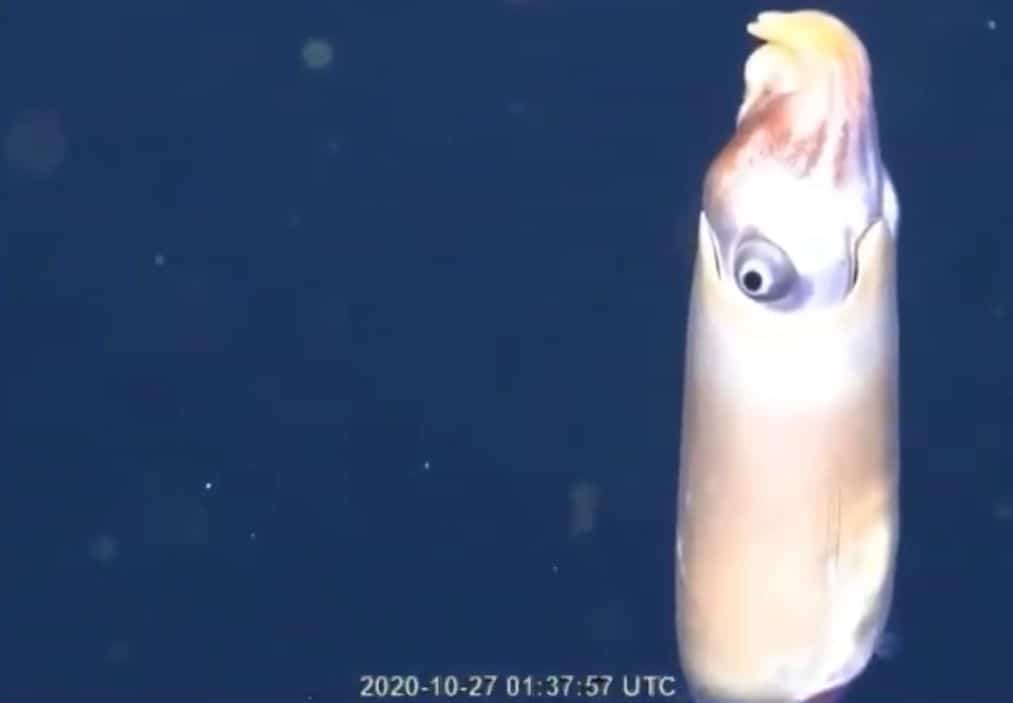Researchers have discovered the peculiar position it takes to swim and thus avoid predators
The shells of ‘Spirula spirula’ are small spiral structures that we can usually see on beaches around the world.
However, despite their popularity, the owners of these shells are extremely elusive, in fact, to date, there have been no images of a single one in their usual activity.
A remote-controlled vehicle (ROV) has now achieved the first filming of this type of squid in its natural habitat.
First images in their natural habitat
Odd-looking, it is barely 7 centimeters long, has 8 arms, 2 tentacles, a pair of bulging eyes, and an overall puppet-like appearance. Also, at the end of its tail, hidden under its mantle, there is a tightly coiled inner shell equipped with gas chambers that the animal uses to float.
The video was not expected at all. “What the hell?” you can hear a background scientist in the video, which was filmed on the Great Barrier Reef (Australia) at a depth of about 850 to 860 meters.
Apart from the cuttlefish, it is the only other known mollusc that contains an internal chamber shell to keep you afloat. Unlike cuttlefish, the skeleton of this squid is tightly coiled. Molluscs in the Nautilus genus also have shells of a similar shape, but they go on the outside of the animal.
“I’ve been looking for this for a long time,” zoologist Michael Vecchione, who studies freshwater squid at the Smithsonian Institution’s National Museum of Natural History, explains to Science Alert. “I have no doubt that it is a Spirula.”
Apart from the unusualness of the recording, the first in its natural environment, there is a surprising aspect to the images: the very position of the animal, with its head and tentacles floating upright, and its fins pointing downwards.
A posture to save life
“Are we completely sure about the orientation of the shoot? If this is the case, this is a king of revolution,” say the researchers. “A lot of people are freaking out because the head is up,”.
In an aquarium, the head is down and its tentacles up, so it was thought that the species took the same position in the depths of the sea
“And the reason they’re freaking out is because the shell with its buoyancy is at the other end of the squid. So you’d think the head, which is heavier, would be hanging down,” adds Vecchione.
When put in an aquarium, this is how the squid is oriented. Its head is down and its tentacles up, so it was thought that the species took the same position in the depths of the sea.
However, according to Vecchione, there is a problem with that assumption. Spirula also has a light-generating organ, known as a photophore, which is located near the floating shell. This means that if they sail with their heads down, that light would be pointed upwards and that is very unusual for animals in the deep.
In the twilight zone of our oceans, predators often have their eyes turned upward in hopes of catching a glimpse of the silhouette of possible prey. Thus, photophores help disguise prey in the depths of the sea by hiding their silhouettes from light. If that lamp is pointing up, that organ is not that useful.
